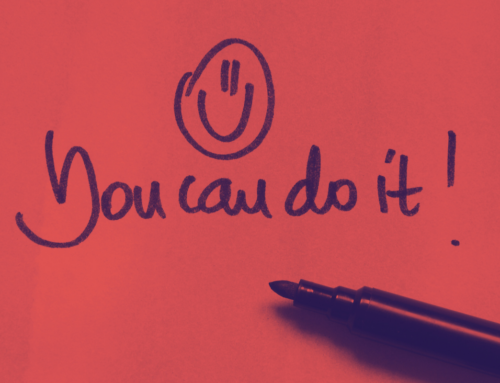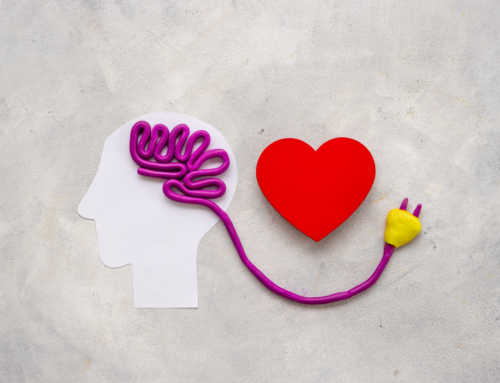We think we make decisions about to how act and what to do consciously, but brain research reveals that most of our decision-making behavior is governed by unconscious processing. In her book, Neuro Web Design: What Makes Them Click?, Susan Weinschenk reveals how to design web sites that appeal to the unconscious mind in order to move people to action.
“We process millions of pieces of information unconsciously all the time,” explains Weinschenk. “Our unconscious mind lets us process all the incoming data from our environment and decides whether it is something to avoid, or something we should consciously pay attention to.” From her understanding of how the brain works, Weinschenk gives us some great advice on how to make web sites that are persuasive and more inclined to make people ‘click’.
Social Validation
People look to others to see what they should do. Online ratings and reviews are a very powerful way to influence behavior. “We will do what others are doing. We will be drawn to belong,” says Weinschenk.
Reciprocity
If somebody gives you something, it’s highly likely that you will feel obliged to give something in return. This strong feeling of cooperation allows people to grow and support each other. Giving a gift increases the likelihood that others will reciprocate by giving you something. “Any time something is given away at a web site,” says Weinschenk, “It has created an opportunity to build indebtedness and reciprocity.”
Scarcity
If there is limited availability of something, we assume it is more valuable, and we want it even more. We see this scarcity invoked all the time on e-commerce sites. ‘Last one in stock’ or ‘limited time only’ are familiar phrases. Restricting information to members only or charging a fee are other ways to add value to your content. If something is inaccessible or forbidden, then we really want it!
Consistency
Because people like to think they are consistent in their actions, if you ask someone to commit to something small first, then it will be easier to get a larger commitment from them later. For example, “If we write a positive review, ” explains Weinschenk, “We will then want to stay consistent, and that means we will take more action to interact with the site, the company, and the organization. If you want to build commitment to your brand, or a product, then make sure you give visitors an opportunity to write a review.”
Similarity
Weinschenk’s research shows that you are more likely to listen to and buy from someone who is like you and someone you find attractive. Similarity builds rapport. If we feel people are like us, we tend to like them more. We find it easier to like those we are similar to or those who we perceive to share our background or values. In order to persuade people, the stories and photos on a web site need to match the target audience or reflect who the audience wants to be.
Fear of Loss
When we are emotionally aroused, whether negatively or positively, we are more likely to encode that experience into our long-term memory. Fear is a powerful emotion,” says Weinschenk. “We are most afraid of losing what we already have.” Fear of losing motivates us more than an opportunity to win. Practically applied, one of Weinschenk’s recommendations is to package goods by subtracting items to reduce price, rather than adding items to increase the price.
Stories
The best way to get and hold someone’s attention is to tell a story. Weinschenk uses plenty of stories throughout the book because, she explains, “When we hear a good story, we give the story teller all of our attention. A good story communicates information thoroughly and commits the information to memory.”
When we think about a story we actually think in pictures and visual images. Because our brains are built to process pictures, and we think in pictures, presenting information as pictures is the most efficient way to present information to people.
“Stories and pictures on a web site,” concludes Weinschenk, “Are the most powerful ways to get and hold our attention and persuade us to take action.”
…
Susan Weinschenk’s blog can be found at http://www.whatmakesthemclick.net/ and here’s a link to Neuro Web Design: What Makes Them Click? on Amazon.
Many of these ideas were also discussed by Robert. B. Cialdini in his best-selling book Influence: Science and Practice.













The web designers are responsible for the visual aspect, which includes the layout, colouring and typography of a web page. A web designer will also have a working knowledge of using a variety of languages such as HTML, CSS, JavaScript, PHP and Flash to create a site, although the extent of their knowledge will differ from one web designer to another.
For a user to understand a website they must be able to understand how the website works. This affects their experience. User experience is related to layout, clear instructions and labelling on a website. The user must understand how they can interact on a site.
This sounds like a very interesting book linking psychology to web design. The argument makes sense as the web design must cater for what the mind processes in order to be engaging and have the desired result (be it click, purchase, read, watch, listen, etc). One can easily link the techniques described here to many popular websites which use such techniques to attract and retain users. For example reciprocity is used a lot by image sharing websites and scarcity is used by many hotels booking websites. It was very interesting reading these techniques described in words and pictures, and it increased my awareness of the thinking that goes into web design behind the scenes.
When we start designing a new website, it’s useful if we can know why visitors will come to this website, such info can help us target more visitors. http://www.carngerrish.co.uk/
Nice. This book is a wonderful talk about how our unconscious mind controls our online behavior. I hope Susan Weinschenk will publish a new book.
Every business owner has a common interest with other business owners, to keep visitors on their website. There are several steps that can be taken to make a guest linger on the website. The longer a visitor is on a website, the better chance that business has of obtaining new clients and widening the websites exposure.
Your listing are progressing with days dungeon it up guys.
“While you’re reading Neuro Web Design, you’ll probably find yourself thinking ‘I already knew that…’ a lot. But when you’re finished, you’ll discover that your ability to create effective web sites has mysteriously improved. A brilliant idea for a book, and very nicely done.”
It is really indeed an enlightening topic you have here. I would like to have your future posts tracked.
Great post, really like it makes me want to imporove my design and coding
Hello there! I know this is kinda off topic but I’d figured I’d ask. Would you be interested in exchanging links or maybe guest writing a blog article or vice-versa? My blog goes over a lot of the same subjects as yours and I believe we could greatly benefit from each other. If you might be interested feel free to shoot me an e-mail. I look forward to hearing from you! Fantastic blog by the way!